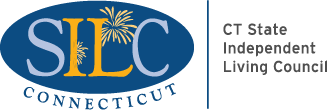Supported Decision-Making

Supported Decision-Making (SDM) is getting help when you need it, from people you choose, so you can make your own decisions.
Think about what you do when you have to make a tough choice, or a decision about something you do not know a lot about, or just want to “talk it out.” You may ask a friend for advice or a professional for information, or you may have “go-to” people you talk to about specific things. They help you “think through” the issues and discuss the “pros and cons” of your choices. That way, you can understand your options and choose the one that is best for you. When you do that, you are using SDM. People give you support, so you can decide. That’s it!
SDM is best known as an alternative to conservatorship or guardianship – something people can use to make their own decisions instead of having someone else make decisions for them. Research shows that “many, if not most” people with disabilities, even those with the most significant disabilities, can use SDM to make at least some decisions.
SDM is in 25 or 26 states and the District of Columbia.
Jenny Hatch | The story of the first SDM case in the United States
SDM burst into view when a young woman named Jenny Hatch became the first person to win the right to use it instead of being put into permanent guardianship. Jenny showed the Judge that she had people in her life who helped her understand, make, and communicate her decisions. Because she had this support, she didn’t (and still doesn’t) need a guardian.
Jenny’s victory was covered in national and international news, and she became known as the “rock that started the avalanche” of SDM. Since Jenny’s case, over twenty states have passed laws recognizing SDM as an option and alternative to guardianship and conservatorship.
For information about Jenny Hatch and her case, see www.jennyhatchjusticeproject.org

Why Should I try SDM?
When you use SDM, you can have more control over your life – more self-determination. When people with disabilities have more self-determination, they can have better lives. They are more likely to work, live independently, and be safer. A recent study found that people with disabilities who used SDM were more independent, self-confident, were better at making decisions, and made better decisions.
Most of the time, there is no way to know if people can use SDM unless they try. That is why organizations like the American Bar Association and National Guardianship Association recommend trying SDM before seeking guardianship, except in extreme situations.
How can I use SDM?
Even though everyone uses SDM, the ways they use it are different for each person – because everyone makes decisions differently and has different ways they like to be supported. Here are ways you can explore how to use SDM for yourself or someone in your life.
Think about when you want to use SDM: First, think about the life areas where you want support making decisions. The “When Do I Want Support” tool can help people identify times and situations when they may want to use SDM.
Think about how you want to be supported: Next, think about the kinds of help you want to make decisions. The “Supported Decision Making Brainstorming Guide” can help you think about ways you may have used SDM before and how you might like to use it now.
Think about who can help: Once you know when and how you want to be supported, think about who can help you when you need it. Friends, family members, and professionals you work with may be able to be part of an SDM team. The “Setting the Wheels in Motion” guide can help you identify people who can help and help you make a plan.
Write it down. Finally, we recommend that you write an SDM plan that says when you want help, how you want to be helped, and who will help you. While you do not have to put your SDM plan in writing, a written plan can show people that you use SDM and how you use it. You can share the plan with friends, family, doctors, and other professionals so they can work together to give you the help you want. There are model SDM plans available or you can work with someone to help you write your own plan.
